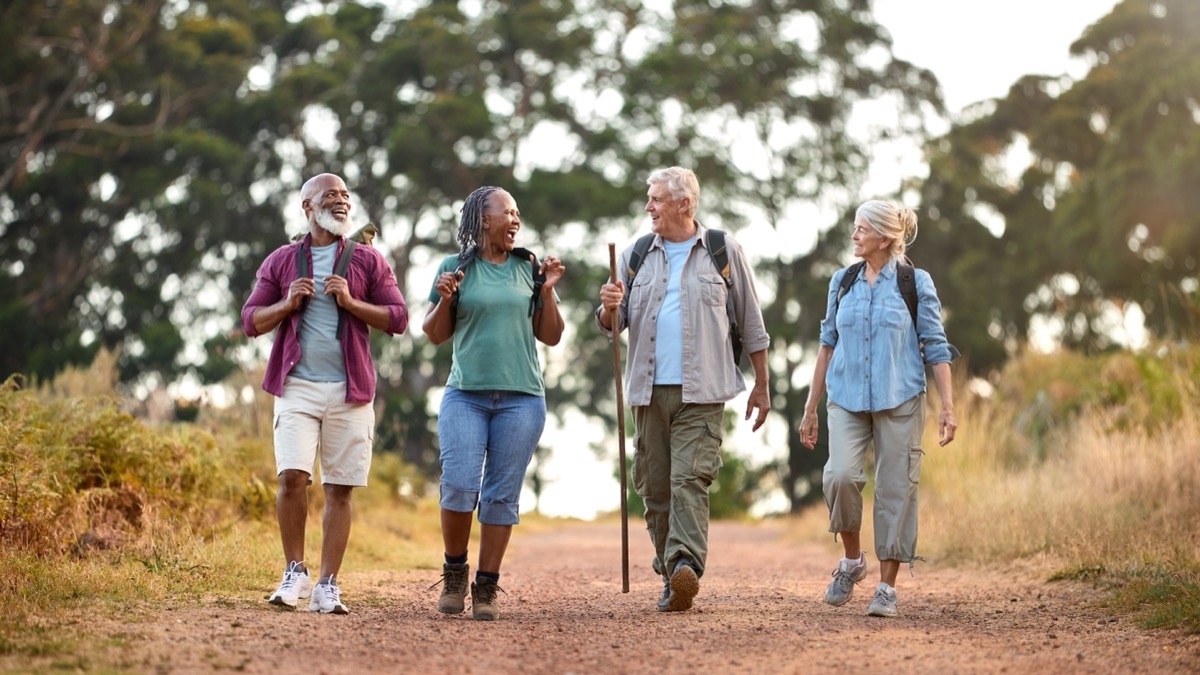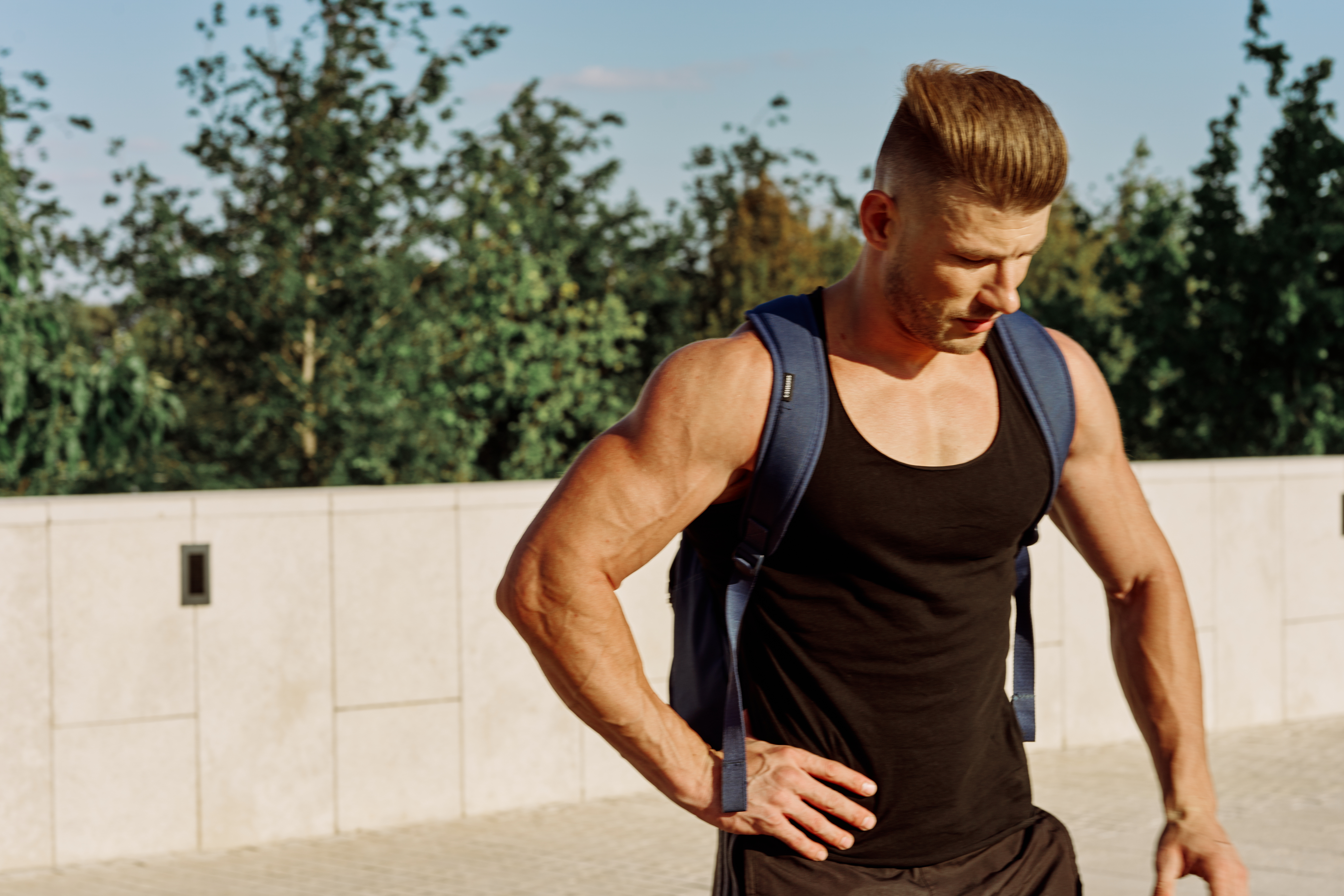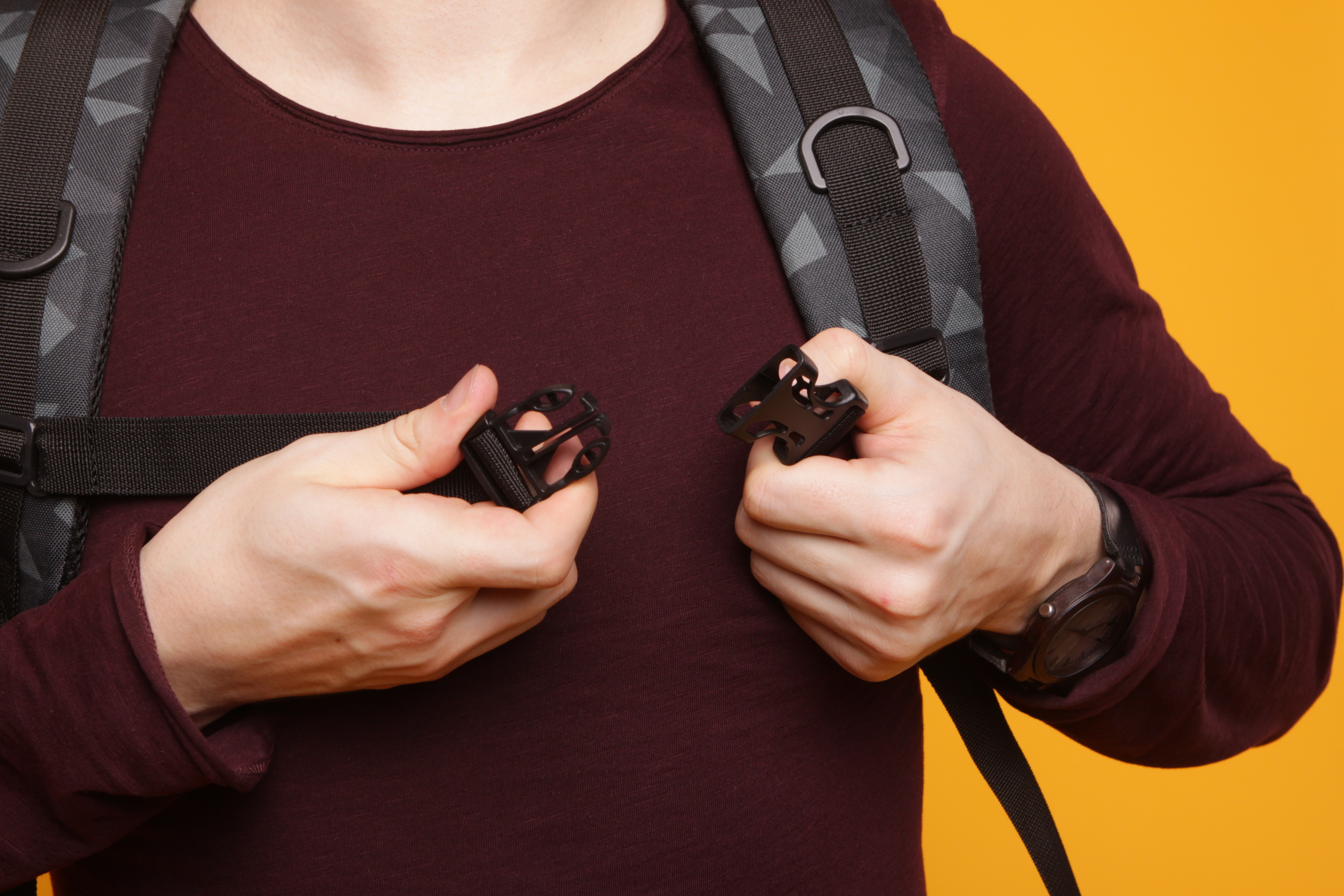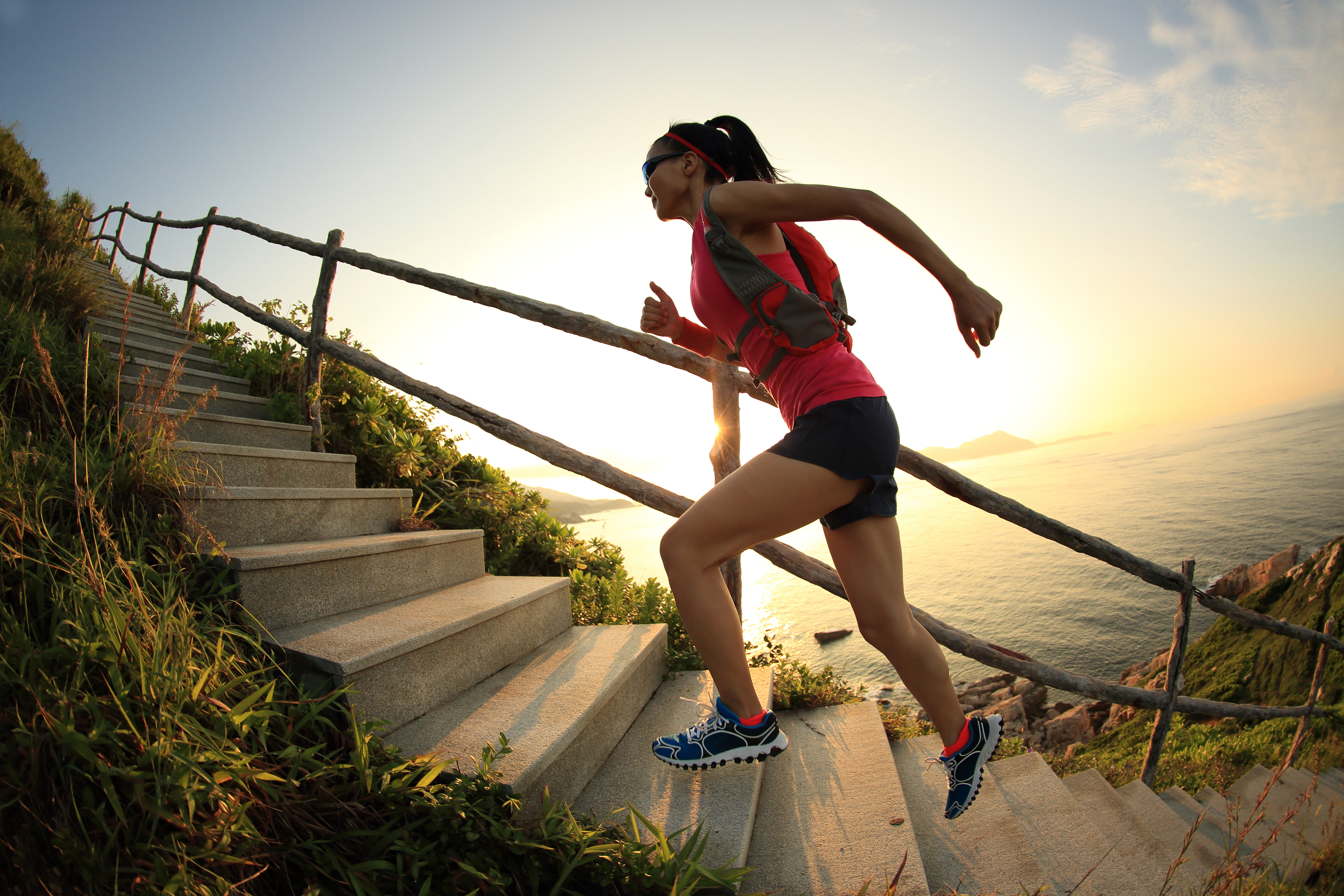“Rucking” Is the New All-Ages Fitness Trend That Can Make You Look and Feel Younger

If you’re looking for a simple way to improve your health, research increasingly shows that a walking routine works wonders. In fact, one recent study found that walking just under 4,000 steps per day can slash your risk of all-cause mortality and improve your cardiovascular fitness significantly. Now, experts say that a new fitness trend called “rucking”—the practice of walking with a weighted backpack—offers even more dramatic benefits to your health and longevity.
Once reserved for those in military training and die-hard fitness fans, everyday people are now incorporating the trend into their daily exercise routines—and to great results. Ready to transform your fitness and add years to your life? Here’s how to get started on this low-entry, high-impact form of exercise.
RELATED: 26 Amazing Health Benefits of Walking.
We were “born to ruck,” experts say.

In modern society, it’s easy to avoid the inconvenience of carrying heavy objects—to the detriment of our health. Rucking returns us to the primal movements that our very survival used to depend on.
“We were born to run, and we were born to ruck. As persistence hunters, we chased down our prey and then carried it back, on our back, often over long distances,” explains Tom Holland, MS, CSCS, CISSN, an exercise physiologist and author of The Micro Workout Plan.
Rucking comes with some major physical benefits.

Rucking takes two important types of exercise, cardiovascular exercise and strength training, and combines them into one seamless workout routine. The benefits are hard to overstate. By taking your regular walking routine and adding a weighted backpack or rucksack—hence the term “rucking”—you can boost your bone strength, build muscle, lose fat, and add years to your life.
“Carrying extra weight while walking engages various muscle groups, enhancing both strength and endurance. This can be particularly beneficial for individuals looking to improve their overall fitness or those training for events that involve load-bearing activities,” explains Maksym Babych, MBA, a professional triathlon coach and dietitian.
“Rucking can also increase the intensity of a walking workout, leading to a higher calorie burn compared to regular walking,” he tells Best Life. “The added weight requires more energy, making it an effective option for those aiming to lose weight or maintain a healthy body composition.”
RELATED: 6 Best Walking Workouts for Weight Loss.
Rucking puts you at low risk of injury.

Rucking is a challenge, but if you take certain safety precautions, it’s unlikely to lead to injury.
“What really sets rucking apart from traditional walking or running is its lower risk of injury while being better for body fitness,” explains Mike Millerson, a former U.S. Army sergeant and survivalist with Survive Nature. “Running, particularly on hard surfaces, often leads to joint injuries due to high impact. Rucking reduces this risk significantly by promoting a slower, steadier pace. It develops core and back muscles, resulting in better posture and overall strength.”
Millerson adds that for individuals in the process of building their fitness abilities, rucking serves as a stepping stone before progressing onto more intensive, high-impact exercises.
RELATED: Silent Walking Is the Latest Wellness Trend Everyone’s Talking About.
Here’s how to get started.

Like other forms of exercise, rucking can take time to get used to. Experts recommend easing into your new routine to prevent strain or overuse.
“Try it once per week for a couple of weeks before adding any other sessions. Maxing out at three times per week would be best for most people so you don’t end up with overuse strains from the pack,” says Rachel MacPherson, CPT, a certified personal trainer and expert panelist for Garage Gym Reviews. “It’s important to cross-train with any activity that can cause repeated stress to specific joints and muscles, especially when you are getting used to the exercise.”
Additionally, you’ll want to ensure the pack fits well and that you begin at a low weight. “The pressure can build up over time. Slowly increase the weight as you get fitter and more accustomed to carrying it, and make any adjustments to your pack necessary to prevent tightness and strain in your back, neck, and shoulders,” MacPherson advises.
For more fitness advice sent directly to your inbox, sign up for our daily newsletter.